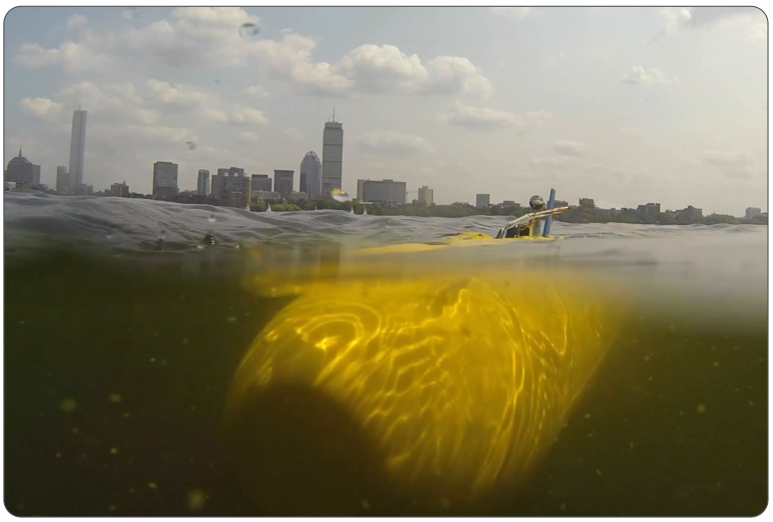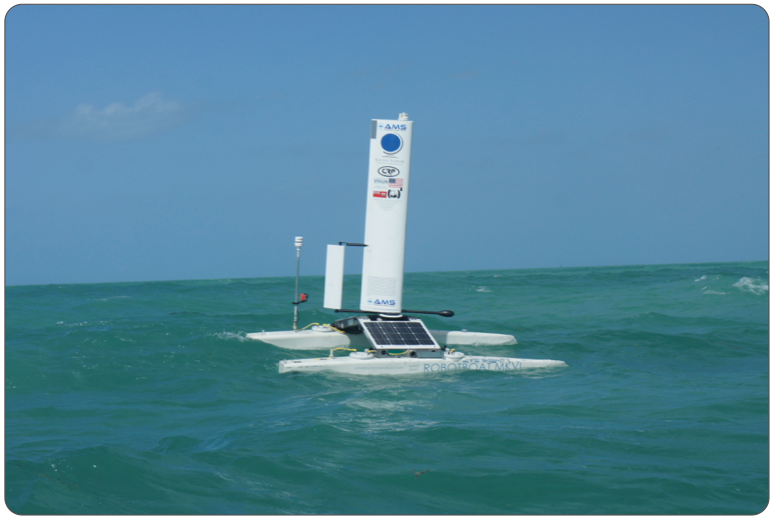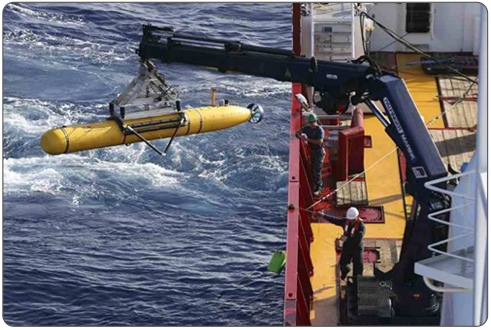Invited Talks 2015:
"SandShark: An Open Platform for Rapid Technology Development"
Chris Murphy, Bluefin Robotics (bluefinrobotics.com)
 | Abstract: The Bluefin SandShark is a small, open-platform, autonomous underwater vehicle (AUV) designed for scientists and developers. SandShark combines a standardized low-cost tail with core vehicle systems, a large modular payload area, and an open development platform. This combination provides a flexible subsea "reference design" to support rapid technology development. SandShark is built on open source software and allows end users to modify or replace all aspects of the vehicle's software stack. Features like quick-connect fins for tool-less field replacement and modular body components make SandShark fast and easy to modify. SandShark's payload bay makes up over half the vehicle - it is the ideal test platform for small subsea sensors and autonomy scenarios. |
"Introducing the Datamaran"
Eamon Carrig, C.T.O. and co-founder of Autonomous Marine Systems Inc. (automarinesys.com)
 | Abstract: The Datamaran is a new deep water instrumentation platform offering fully autonomous operation over mission durations measured in months. It is primarily wind propelled, and is power positive. It is the worlds first self-righting catamaran. Unique deployment and payload configuration options set the Datamaran apart from other ASVs. Demonstrations will take place at the Charles River Autonomy Lab, and recent testing results will be exhibited. Design motivations, with a particular focus on the autonomy framework developed within MOOS-IvP, will also be presented. |
"Payload Autonomy on the Phoenix International Artemis AUV"
Peter McKibbin, Special Projects Manager, Phoenix International (phnx-international.com)
 | Abstract: Since 2012, Phoenix has commercially owned and operated a 21 inch AUV named Artemis. Some of the missions conducted with Artemis are the search for Amelia Earhart’s plane, initial search for Malaysian Airlines 370, and a private plane search off Jamaica. These first missions were limited to the two payloads purchased with the vehicle: multi-beam sonar, side scan sonar, and sub bottom profiler payload and a high resolution black and white camera payload. Since 2014, using MOOS-IvP and with encouragement of MIT, Phoenix has begun to design and develop payloads expanding the capabilities available on our system to include payloads for oil and gas, subsea mining, and other industries. Phoenix has also recently been involved in a project that required the MOOS-IvP backseat driver capability. |